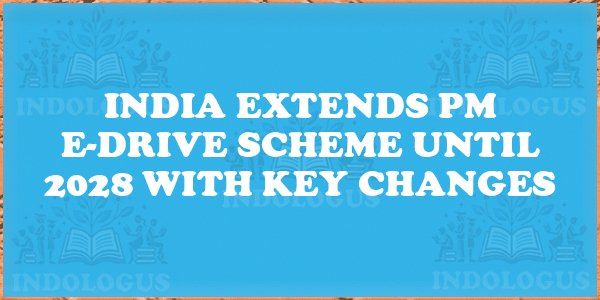The Prime Minister Electric Drive Revolution in Innovative Vehicle Enhancement (PM E-DRIVE) scheme has been extended by the Government of India until March 2028. However, subsidies for electric two- and three-wheelers will end by March 2026, indicating a shift in policy towards market maturity.
Scheme Overview
- Launched on October 1, 2024, with a budget of ₹10,900 crore.
- Aims to accelerate India’s transition to electric mobility through purchase incentives, charging infrastructure expansion, and testing facility upgrades.
Financial Allocation
- ₹3,679 crore for demand incentives for electric two-wheelers, three-wheelers, ambulances, and trucks.
- ₹7,171 crore for electric bus adoption, public charging stations, and testing facilities.
Targets by 2028
- 24.79 lakh electric two-wheelers
- 3.16 lakh electric three-wheelers
- 14,028 electric buses and trucks
- 88,500 EV charging points nationwide
Subsidy Structure and Adjustments
- Subsidies for electric two-wheelers reduced to ₹2,500 per kWh from April 2025.
- Electric truck subsidies introduced in July 2025 at ₹5,000 per kWh or up to 10% of the ex-factory price.
Infrastructure Focus
- ₹2,000 crore allocated for fast chargers for four-wheelers, buses, and two- and three-wheelers.
- Charging station subsidy guidelines expected soon.
Policy Shift: From Support to Self-Sustaining Growth
Ending subsidies for mature EV segments signifies a move from fiscal support to market-led growth. Subsidies will continue for buses, trucks, and charging infrastructure to support early-stage adoption.
Key Takeaways for Competitive Exams
- The PM E-DRIVE scheme in India has been extended until March 2028.
- Subsidies for electric two- and three-wheelers will end by March 2026.
- The scheme aims to boost electric mobility through various incentives and infrastructure upgrades.
- The shift in policy focuses on market maturity and self-sustaining growth in the EV sector.



